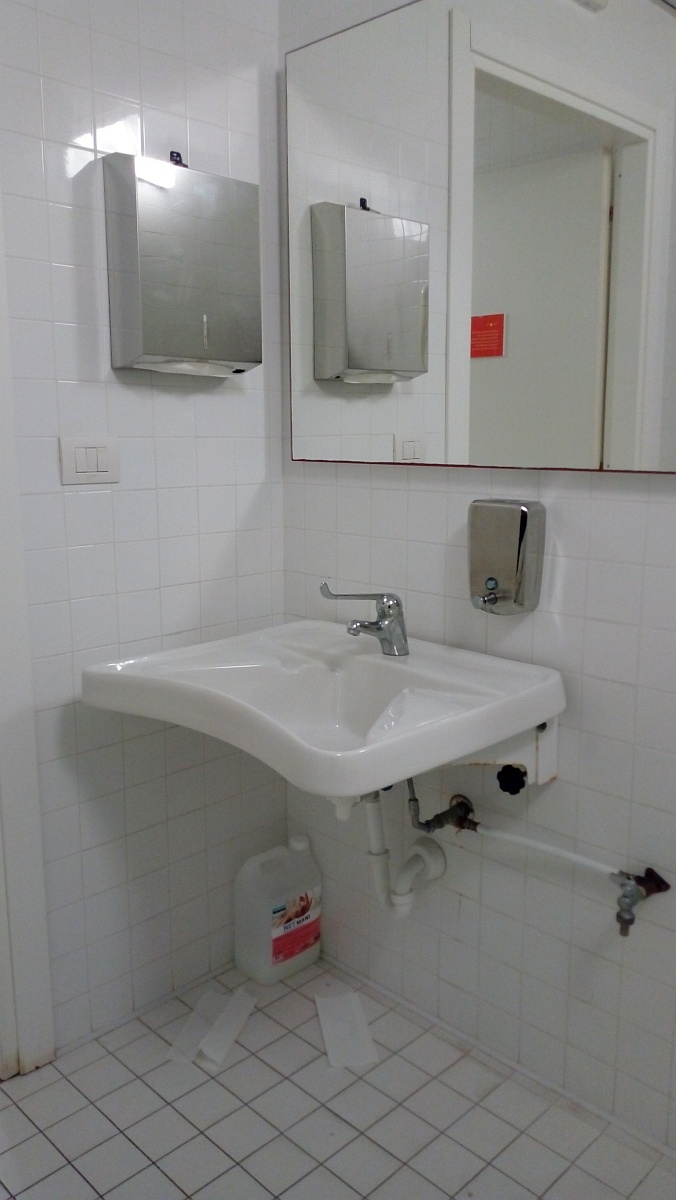Museum
The Accademia Carrara in Bergamo is a museum with a specific and, in some ways, unique identity, closely tied to its origins and history. Unlike many Italian museums, Carrara is the result of the ambitious project of Giacomo Carrara (1714-1796) to promote the establishment of a cultural institution that would combine pleasure and education, serving as both an art gallery and a painting school. The success of this idea is evidenced by the extensive series of large and small donations made over more than two centuries by individuals and institutions. These, along with a few targeted acquisitions, have complemented the original foundation laid by the founder. Besides Carrara, leading the long list of donors are notable figures such as Guglielmo Lochis, Giovanni Morelli, Federico Zeri, and Mario Scaglia. Their collections form the backbone of the museum and contribute to defining the diverse and articulated character of its heritage.
The renewed visitor's journey is organized in 16 differently-sized rooms, showcasing a total of 350 exhibited works, including paintings, sculptures, medals, and plaques. Visitors thus have the opportunity to embark on a five-century journey through the history of Italian art, from the Renaissance to the nineteenth century, encountering masterpieces by Pisanello, Mantegna, Botticelli, Raphael, Titian, Lotto, Moroni, Hayez, and Pellizza da Volpedo.
Heritage
The Carrara gallery preserves 1,587 paintings, 132 sculptures, a significant collection of drawings, prints and a precious collection of decorative arts, from fans to porcelain, from bronze to medals. A significant heritage, generously made available to visitors through an exhibition that allows you to admire over 500 paintings and about 60 sculptures. A varied and surprising itinerary, punctuated by authentic masterpieces of Italian art.
Leonello d'Este’s elegant profile painted by Pisanello and the Portrait of Giuliano de’ Medici by Botticelli.
The moving Madonna by Andrea Mantegna and that rich with humanity by Giovanni Bellini. Raffaello's unforgettable San Sebastiano, with his dreamy gaze, and the real faces of the characters portrayed by Giovan Battista Moroni or Piccio.
The silence of the still lifes by Baschenis, the pigments and lacquers of Fra Galgario. And again Lorenzo Lotto, Tiziano, Tiepolo, Canaletto and Guardi. The great Italian tradition of painting that continues in the nineteenth century: from Hayez to Previati up to the poignant face of Santina Negri, painted by Giuseppe Pellizza da Volpedo that closes the visit to the gallery.
Events.
Accademia Carrara is also events. It is dynamism, vivacity. It is the presence of different languages. It is a cultural proposal that opens up to forms of artistic contamination capable of completing the museum's offer. Concerts, theatrical performances, conferences and seminars, but also private events, gala dinners, business meetings and occasions for representation. Accademia Carrara is an open space and a unique location. It is the perfect place to experience the beauty of art in all its dimensions. Accademia Carrara’s projects, friendship for individuals and membership for companies, are aimed at enthusiasts, friends and art supporters. They are given the right to a series of exclusive advantages and offer the possibility of establishing a direct and privileged relationship with the life of the museum.
Friendship – membership
The Accademia Carrara works to open the doors of the museum to as many people as possible, to break down visible and invisible barriers. In fact, we believe it is a place of discovery, personal growth and social inclusion open to the world. A place of active and permanent learning in which you are passionate and have fun.
The Accademia Carrara is a formative and intercultural vocation, which every day offers new opportunities for getting to know the historical and artistic heritage.
Guided and dynamic tours, workshops, readings, narrations: the Educational Services plan ad hoc activities in order to establish a positive and rewarding dialogue with adults, children, people with disabilities, families and tourists, offering interpretation opportunities for a museum in harmony with the needs of its users.
Museum
The Accademia Carrara in Bergamo is a museum with a specific and, in some ways, unique identity, closely tied to its origins and history. Unlike many Italian museums, Carrara is the result of the ambitious project of Giacomo Carrara (1714-1796) to promote the establishment of a cultural institution that would combine pleasure and education, serving as both an art gallery and a painting school. The success of this idea is evidenced by the extensive series of large and small donations made over more than two centuries by individuals and institutions. These, along with a few targeted acquisitions, have complemented the original foundation laid by the founder. Besides Carrara, leading the long list of donors are notable figures such as Guglielmo Lochis, Giovanni Morelli, Federico Zeri, and Mario Scaglia. Their collections form the backbone of the museum and contribute to defining the diverse and articulated character of its heritage.
The renewed visitor's journey is organized in 16 differently-sized rooms, showcasing a total of 350 exhibited works, including paintings, sculptures, medals, and plaques. Visitors thus have the opportunity to embark on a five-century journey through the history of Italian art, from the Renaissance to the nineteenth century, encountering masterpieces by Pisanello, Mantegna, Botticelli, Raphael, Titian, Lotto, Moroni, Hayez, and Pellizza da Volpedo.
Heritage
The Carrara gallery preserves 1,587 paintings, 132 sculptures, a significant collection of drawings, prints and a precious collection of decorative arts, from fans to porcelain, from bronze to medals. A significant heritage, generously made available to visitors through an exhibition that allows you to admire over 500 paintings and about 60 sculptures. A varied and surprising itinerary, punctuated by authentic masterpieces of Italian art.
Leonello d'Este’s elegant profile painted by Pisanello and the Portrait of Giuliano de’ Medici by Botticelli.
The moving Madonna by Andrea Mantegna and that rich with humanity by Giovanni Bellini. Raffaello's unforgettable San Sebastiano, with his dreamy gaze, and the real faces of the characters portrayed by Giovan Battista Moroni or Piccio.
The silence of the still lifes by Baschenis, the pigments and lacquers of Fra Galgario. And again Lorenzo Lotto, Tiziano, Tiepolo, Canaletto and Guardi. The great Italian tradition of painting that continues in the nineteenth century: from Hayez to Previati up to the poignant face of Santina Negri, painted by Giuseppe Pellizza da Volpedo that closes the visit to the gallery.
Events.
Accademia Carrara is also events. It is dynamism, vivacity. It is the presence of different languages. It is a cultural proposal that opens up to forms of artistic contamination capable of completing the museum's offer. Concerts, theatrical performances, conferences and seminars, but also private events, gala dinners, business meetings and occasions for representation. Accademia Carrara is an open space and a unique location. It is the perfect place to experience the beauty of art in all its dimensions. Accademia Carrara’s projects, friendship for individuals and membership for companies, are aimed at enthusiasts, friends and art supporters. They are given the right to a series of exclusive advantages and offer the possibility of establishing a direct and privileged relationship with the life of the museum.
Friendship – membership
The Accademia Carrara works to open the doors of the museum to as many people as possible, to break down visible and invisible barriers. In fact, we believe it is a place of discovery, personal growth and social inclusion open to the world. A place of active and permanent learning in which you are passionate and have fun.
The Accademia Carrara is a formative and intercultural vocation, which every day offers new opportunities for getting to know the historical and artistic heritage.
Guided and dynamic tours, workshops, readings, narrations: the Educational Services plan ad hoc activities in order to establish a positive and rewarding dialogue with adults, children, people with disabilities, families and tourists, offering interpretation opportunities for a museum in harmony with the needs of its users.
Getting there
50 metres away (Piazza Carrara): 3 reserved parking spaces (2 in accordance with the law, 1 without side band).
100 metres (Piazzale Oberdan-via C. Battisti): bus stops for line C and other lines; step height 16cm; bus equipped with manual platform.
Footpath from carparks and bus stop: partly flat, in part it is slightly uphill and adequate in terms of width and type of paving; no tactile ground surface indicators. Road crossings in Piazzale Oberdan controlled by traffic lights, with footpath-road ramps and central traffic island.
Entering
Access is through a side entrance connected with ramps (closed, but the staff open it on the arrival of the visitors); ticket counter height = 78cm; the Picture Gallery is equipped with two manual courtesy wheelchairs available to visitors.
Access to exhibition halls (1st and 2nd floor) via 2 lifts accessible nearby the 2 staircases; lift with 90cm door, 210x110 and 130x90 cm cabins; braille button panel height 115cm; capacity 1000kg and 480kg.
Visiting
Exhibition spaces all accessible (flat or connected by short ramps) except the bow-window on the 2nd floor (5 steps).
The exhibits are visible and the captions are legible.
There are no measures for the visually impaired. Ad hoc guided tours are available with the possibility of touching some sculptures.
Accessible and useable didactic classrooms on ground floor.
Using the bathroom
Bathrooms accessible on the ground and 2nd floors. Doors 90cm with external opening; room for maneuver in accordance with the law; toilet height 51cm, frontal and lateral approach; presence of hand rails; no hand shower for bidet; ergonomic washbasin 85cm high, with fixed mirror.
Synthetic evaluation
Person with motor disability: accessible in autonomy.
Person with visual impairment: accessible with a companion.
Gallery
Fermata autobus in via Battisti
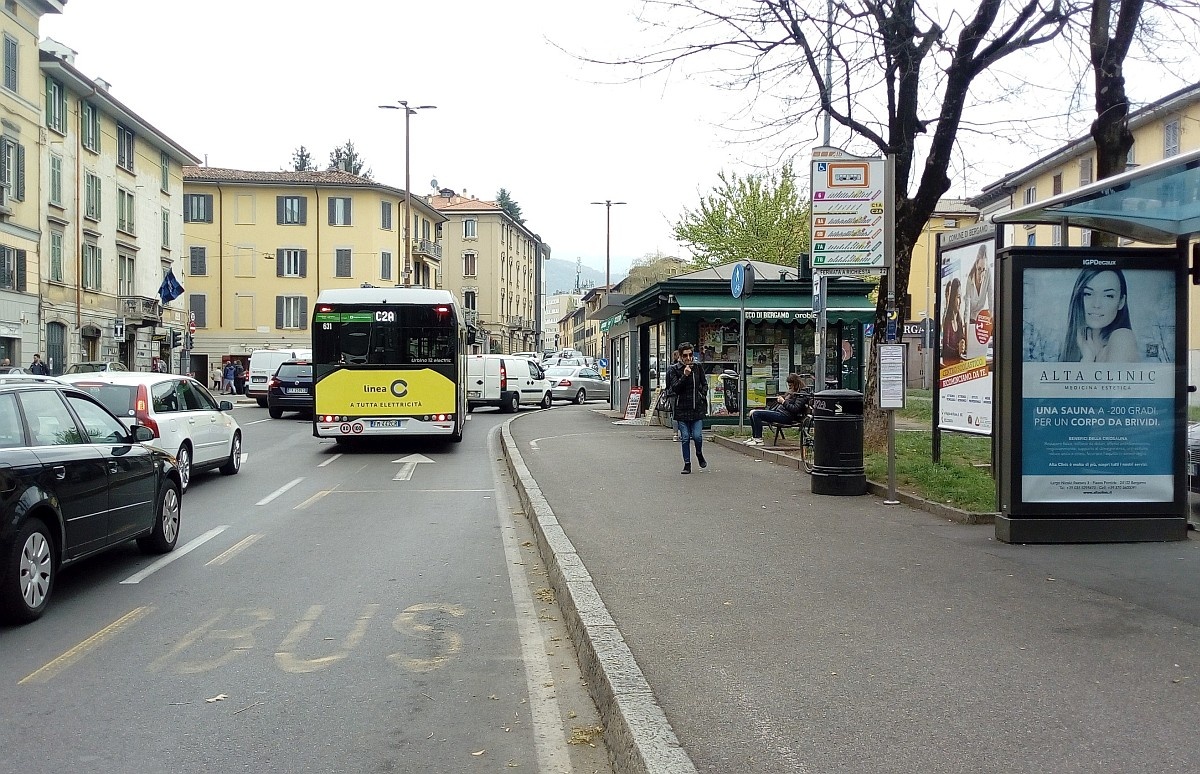
Attraversamento stradale - Piazzale Oberdan
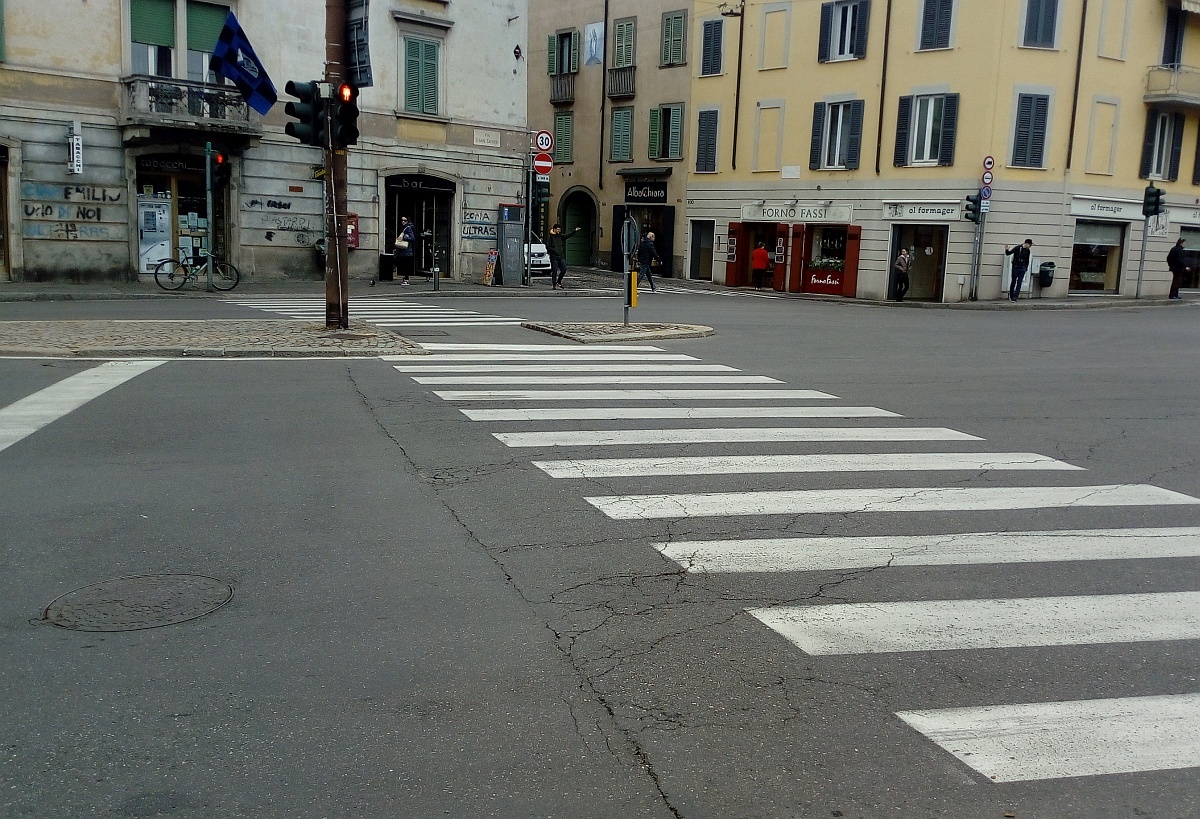
Posti auto riservati
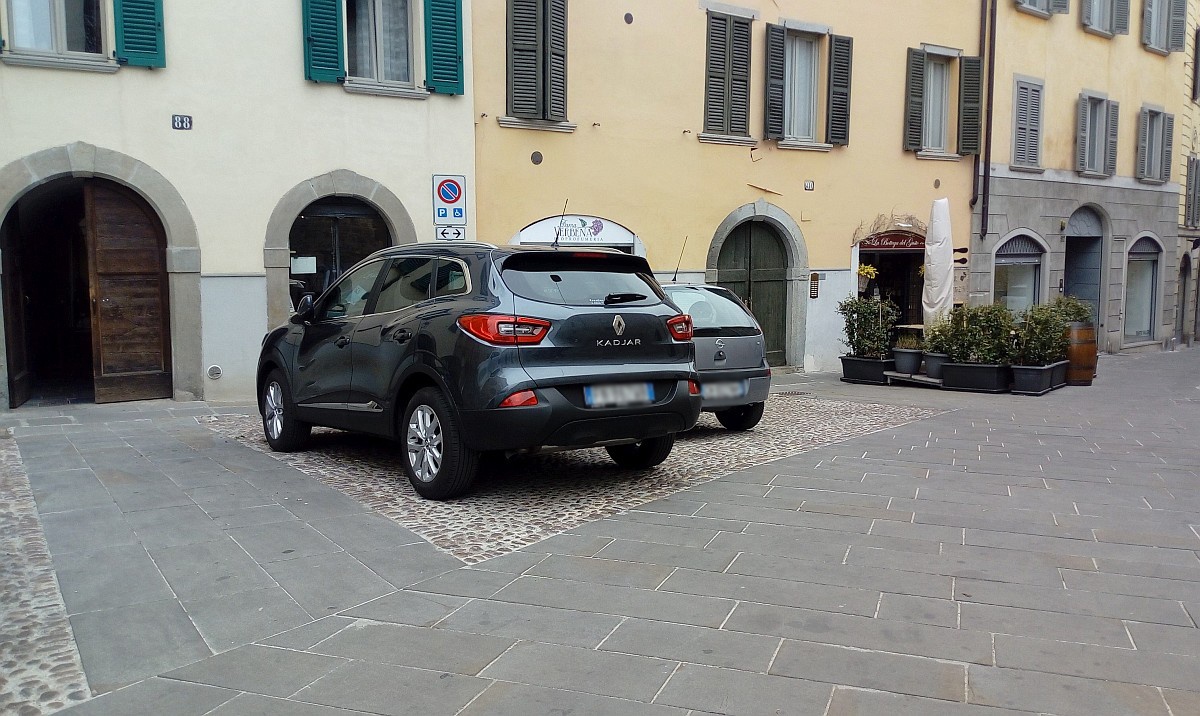
Piazza Carrara verso l'ingresso alla pinacoteca.
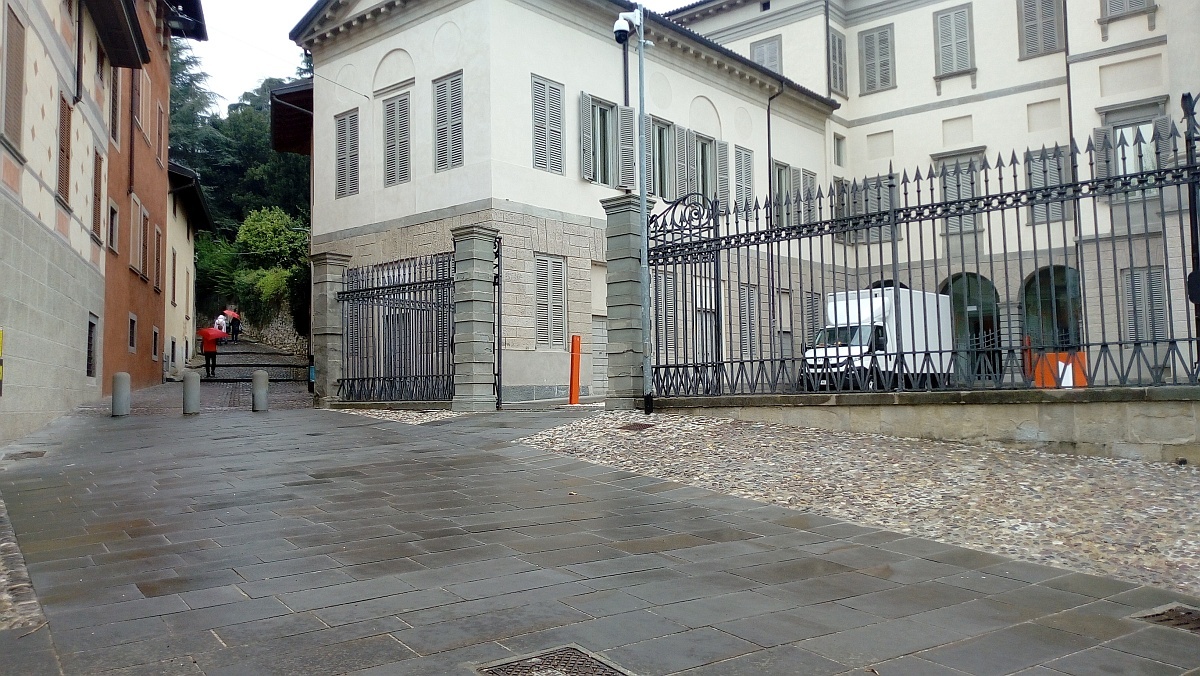
Percorso d'ingresso
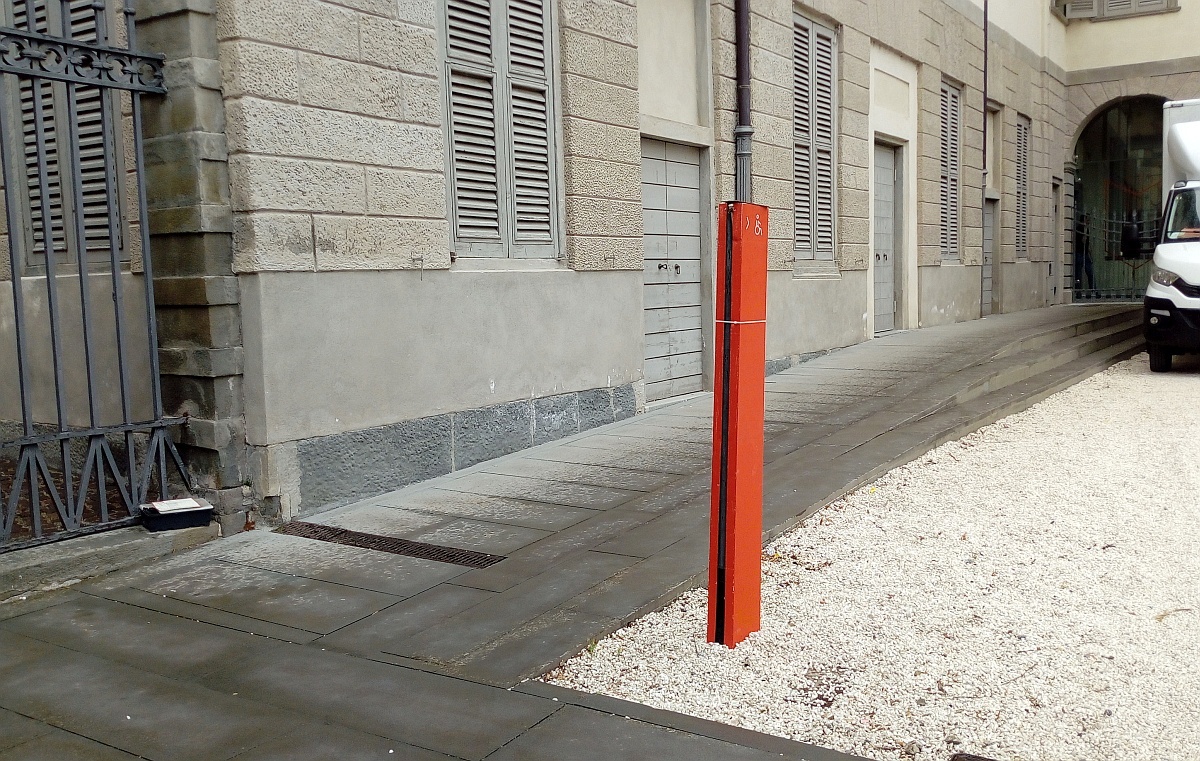
Ingresso accessibile
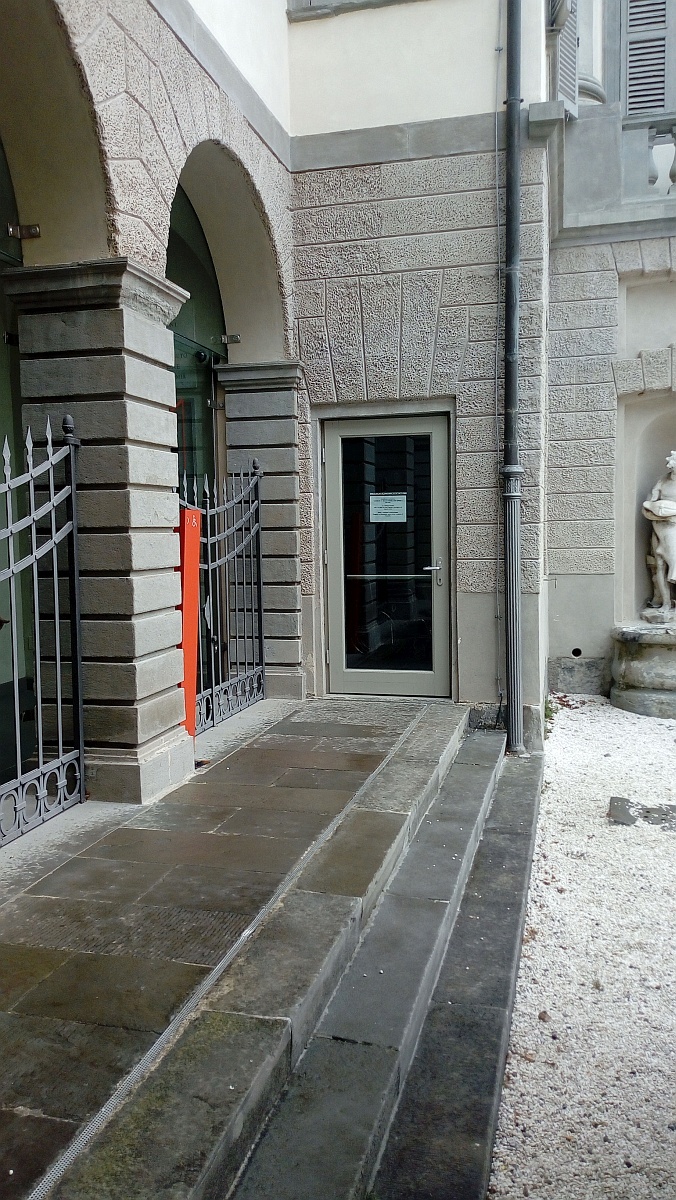
Biglietteria
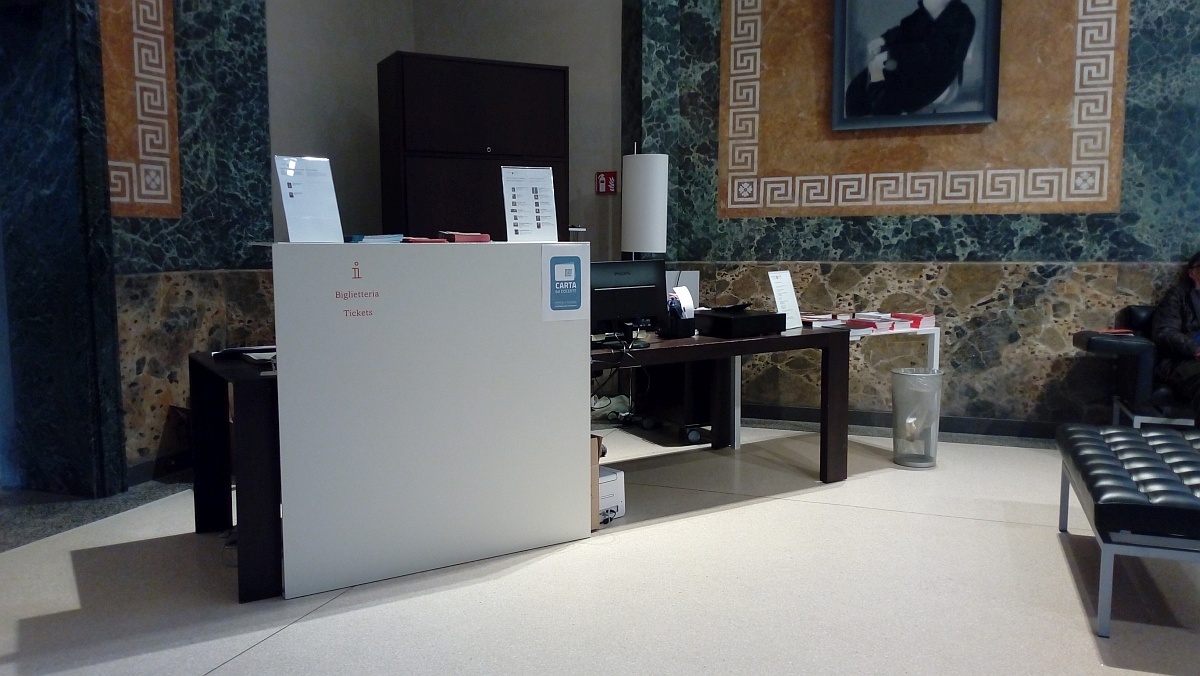
Ascensore con cabina 210 x 110 cm
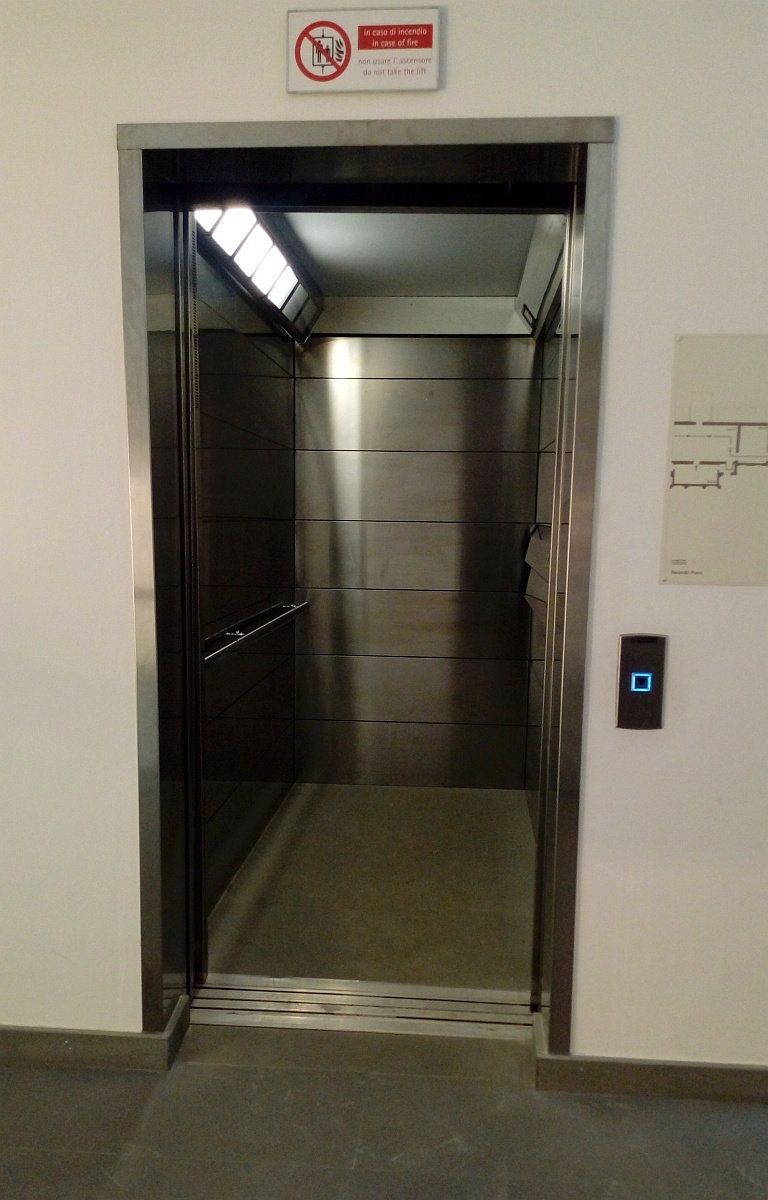
Bagno attrezzato

Bagno attrezzato - lavabo
